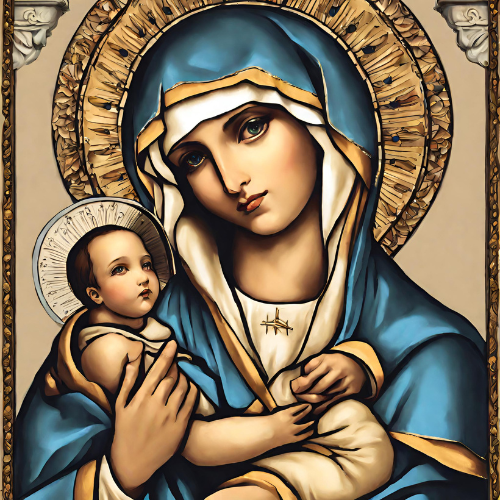
Key notes
- History:
- Mary, the mother of Jesus, is a central figure in Christianity.
- Her life is primarily recounted in the Gospels of Matthew, Luke, and John.
- Born in Nazareth, she was a Jewish woman who, according to Christian belief, conceived Jesus through the Holy Spirit.
- Key Teachings and Roles:
- Mother of God: In many Christian denominations, Mary is revered as the “Mother of God” (Theotokos in Greek) due to her role in the incarnation of Jesus, who is believed to be both fully God and fully human.
- Model of Faith and Obedience: Mary’s life is seen as an example of faith, obedience, and humility. Her response to the angel Gabriel’s announcement of her pregnancy (“Be it unto me according to thy word”) is considered a model of submission to God’s will.
- Intercessor: Many Christians believe that Mary intercedes on behalf of humanity before God.
- Queen of Heaven: In some traditions, Mary is venerated as the “Queen of Heaven,” reflecting her exalted position as the mother of the King of Kings.
- Modern Tenets:
- Focus on Devotion: Devotion to Mary is a significant aspect of many Christian denominations, particularly Catholicism. This includes prayers, pilgrimages to shrines dedicated to her, and the recitation of the Rosary.
- Symbol of Hope and Compassion: Mary is often seen as a symbol of hope, compassion, and maternal love.
- Role in Christian Art and Literature: Mary has been a prominent subject in Christian art and literature throughout history, inspiring countless works of art, music, and poetry.
- Please Note:
- Christian beliefs about Mary vary significantly among different denominations.
- Some Protestant denominations place less emphasis on the veneration of Mary.
- I hope this provides you with a better understanding of the significance of Mother Mary in Christianity.
Hail Mary
“Hail Mary, full of grace, the Lord is with thee. Blessed art thou among women, and blessed is the fruit of thy womb, Jesus. Holy Mary, Mother of God, pray for us sinners, now and at the hour of our death. Amen.”
Moreover, the WordPress community and theme developers are actively contributing to a growing library of block patterns, making it easier for users to find a pattern that suits their needs. Whether you’re building a landing page, a photo gallery, or a complex layout, there’s likely a block pattern ready to use.
This democratizes design for non-technical users while offering developers a way to extend WordPress functionality and provide more options to their clients.